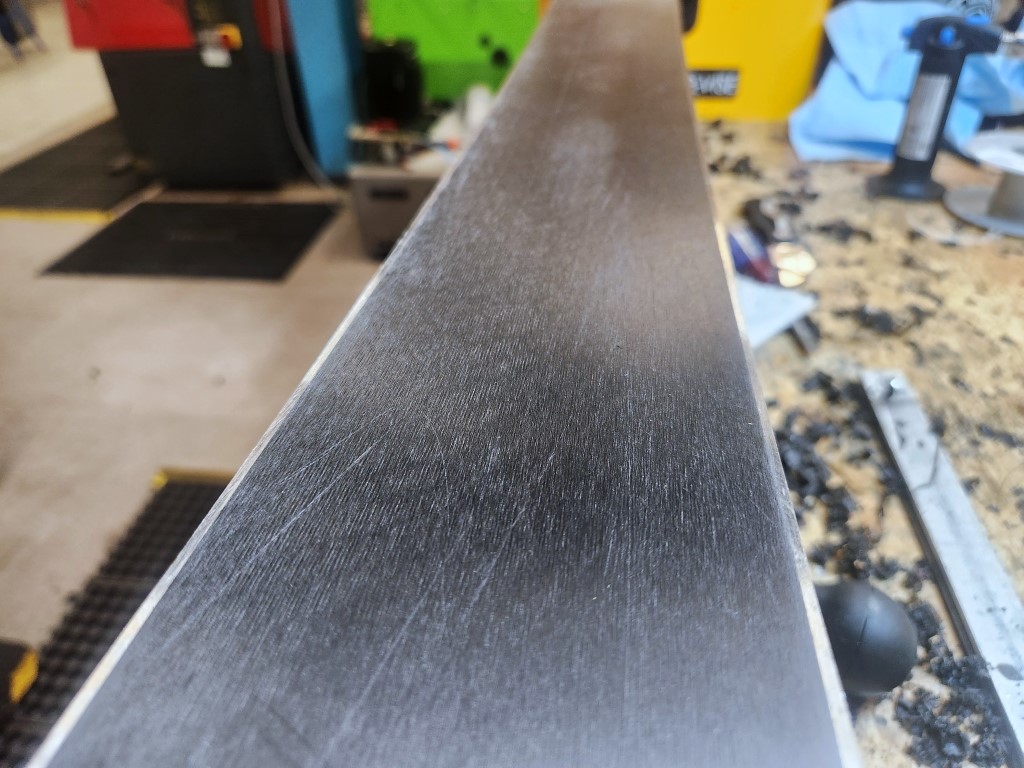

Imagine this: you’re standing at the peak of your favorite mountain, with perfect powder on a dream line. The world stretches out before you, beckoning you to conquer its slopes with skill and finesse. But before you launch into that exhilarating descent, do you have a fresh wax? Will your bases run smooth over the untracked powder? It’s an essential, but often overlooked piece of your equipment: regular ski maintenance.

In the fast-paced world of winter sports, where the focus is often on perfecting technique and chasing adrenaline rushes, the importance of ski maintenance can be easily forgotten. The best of us let our skis go on for maybe a little too long between tunes and waxes. But, if you want your gear to perform at its very best, keeping up with regular ski maintenance will ensure you have the best experience. I talked with super star Powder7 ski tech Ben S. to answer burning questions about how to take care of our precious snow sticks.
Contents hideThe age old question: how often to wax skis. The rule of thumb is every few ski days, depending on the wax and the snow conditions. A belt wax (a quick wax application from a running belt) will last you about one to three ski days. Because the wax doesn’t have as much time to set into the base of the ski, the wax is stripped off more easily. A belt wax offers a quick and cheap solution if you’re in a pinch, or if you just spend a few days a year skiing. Most resorts offer a belt wax in their tune or rental shop.
A hot wax lasts longer. Our techs say these waxes can last from 5-7 ski days. This process takes a little longer, but allows the wax to settle into the base for better performance and longevity. If you’re skiing a lot throughout the season, or don’t want to worry about showing up to the mountain with dry skis, we like to recommend splurging the few extra bucks for a hot wax.
If you feel the dreaded “yank” sensation—where your skis feel like they’ve grabbed the snow—that’s a good indicator you might need a fresh wax. You also might feel literally slower than you should be.
You can also see if your skis need a wax based off how the base looks. Healthy bases will look hydrated, or at their full color saturation. A classic black base will look dark and consistent. Dry bases might have some white feathering, flaky, or almost like dry wood.


After offering the DPS Phantom Glide Treatment for a few years now, we can confidently say a lot of folks will enjoy having it. The Phantom Wax is applied to the base of your skis, then baked in a UV oven so it can set. It’s not a “never, ever wax again” solution, but we do find it helps keep your bases in tip-top shape. You’ll be able to wax less frequently, keeps your bases more durable, and it certainly adds a bit of speed to your bases. We call that, being Phantom Fast.
Phantom application heightens your ceiling and your basement of ski performance. It’s always going to perform better with Phantom, but you’ll still need to wax every once in a while. Still waxing every 5-7 ride days is good baseline to stick by, but you’ll also be zippier than just with the hot wax. If you surfboard a little bit of wax on the base with the white pad that comes with the treatment, it’ll really boost you.
Ben S.
You don’t need to be a gnarly skier to need Phantom. It’s a great addition if you want to prioritize your ski’s longevity. We also see backcountry skiers finding good use from it since the Phantom isn’t stripped off when ripping skins.
Tuning your ski and snowboard include everything besides the wax on the skis. That means base grinds to flatten and smooth the bases, edge shaprens to keep the edges grippy on firm snow, to base and edge repairs. Sometimes you need them all, sometimes you don’t need anything, and sometimes you can go a la cart. So how do you know when to tune your gear?
It’s dependent on what kind of skier or rider you are and what kind of riding you’re doing. If you’re cruising mellow terrain and not scratching or damaging your gear, your main concern is maintaining wax. You should just need one full tune per season, with some waxes throughout. An aggressive rider in technical rocky terrain might need up to four tunes a season.
Ben S.
Tunes are going to be more of a personal preference for the rider. Racers will want knife sharp edges that cut you loading them in and out of the car, and perfectly flat bases. Park riders might want something duller than average, but it can depend. Some riders like a precise edge angle that will need more work to maintain.
If you aren’t hitting too many hazards, you may not need a base grind by the time you need an edge shapen. Other times, you might need to stop in for a repair or base grind after bonking a rock a little too hard. Anytime you get a core shot, open cuts on the base, or edge separations, you’ll want to take the gear into a shop for some attention.
Unlike wax, the feeling of needing a tune will come on more slowly. You may start to feel dull edges not bite into the snow as well as they did earlier in the season. After a few bonks with rocks or branches, your edges may start to get “burrs” on them. These are small areas where the edge was roughed up from an impact. Because the edge is uneven, these burrs can also start to feel hooky or grabby. Burrs are fairly easy to clean up with a gummi stone, which is a great thing to keep in your garage to keep those edges polished and running smooth throughout the season. They can also really help clean up rust.
You might need to detune your skis shortly after a fresh tune. Ultra sharp edges can feel “grabby”, almost like they’re hooking up for a turn too early. If you just had a fresh tune and feel like they’re a little too sharp, take them into the rental shop or use a file to dull the contact points with the snow.
A classic question asked by customers to our techs mid-season falls along the lines of “is my gear done-zo?” Ben shared some examples of truly broken skis, and skis that just need a bit of a repair.



Things like edge separations and cracked edges where your edge has taken some serious impact, usually mean the skis have reached the end of their life. Sometimes edge separations can be temporarily repaired, but they need to be sealed so water can’t get into the core.
I asked Ben about edge compressions, which can be a hot topic and disappointing when you land one. Ben told me “That’s a tough one. If it’s gnarly enough, it might affect the shape of the core, which will affect how it skis. A small edge compression won’t affect you too much. If you’re cool with it, you can ride it.” Unless you hit it again (which could cause more damage), you aren’t hurting anything within the ski.

Ski storage is important for longevity and keeping up with ski maintenance. If you properly store your skis, the first thing to go on your ski setup will be your boots or even bindings.
Ben recommends always adding a storage wax to your skis before the summer, or if you know you won’t be skiing for a bit. Storage wax is just normal wax applied in a thick layer that isn’t scraped off. Once you’re ready to start skiing, scrape the wax off and you’ll be all ready to ski. Storage wax is important to make sure the bases stay hydrated and protected, and keeps them in healthier shape when you’re ready to go ski.
One aspect of storage that’s less touched on than summer storage is between home and the slopes. It’s important after a ski day to wipe down your skis before stashing them in your trunk, and especially before putting them on a roof rack. If you have to store your skis on a roof rack on drives, always wipe them down after getting home. There’s no faster path to getting rusty edges than road slush.
Despite being tools and not jewels, they’re still expensive tools and we want them to have a few seasons under their belts. Besides storing your skis correctly, be sure to not clack your skis together on the lift, or stomp the tails on the ground. That’s an express ticket to getting chips and dings that expose wood to water. While small chips will happen over time with use, the extensive chipping the photos below are from more intentional impact.


If you get some of these chips, bring them to a shop so you can have them epoxyed and sealed up. That will prevent water from getting into the core, which will affect the ski’s lifespan.
Keeping up with your ski maintenance can transform your skiing by enhancing your ski’s performance, keeping you safer, and helping your skis last longer.